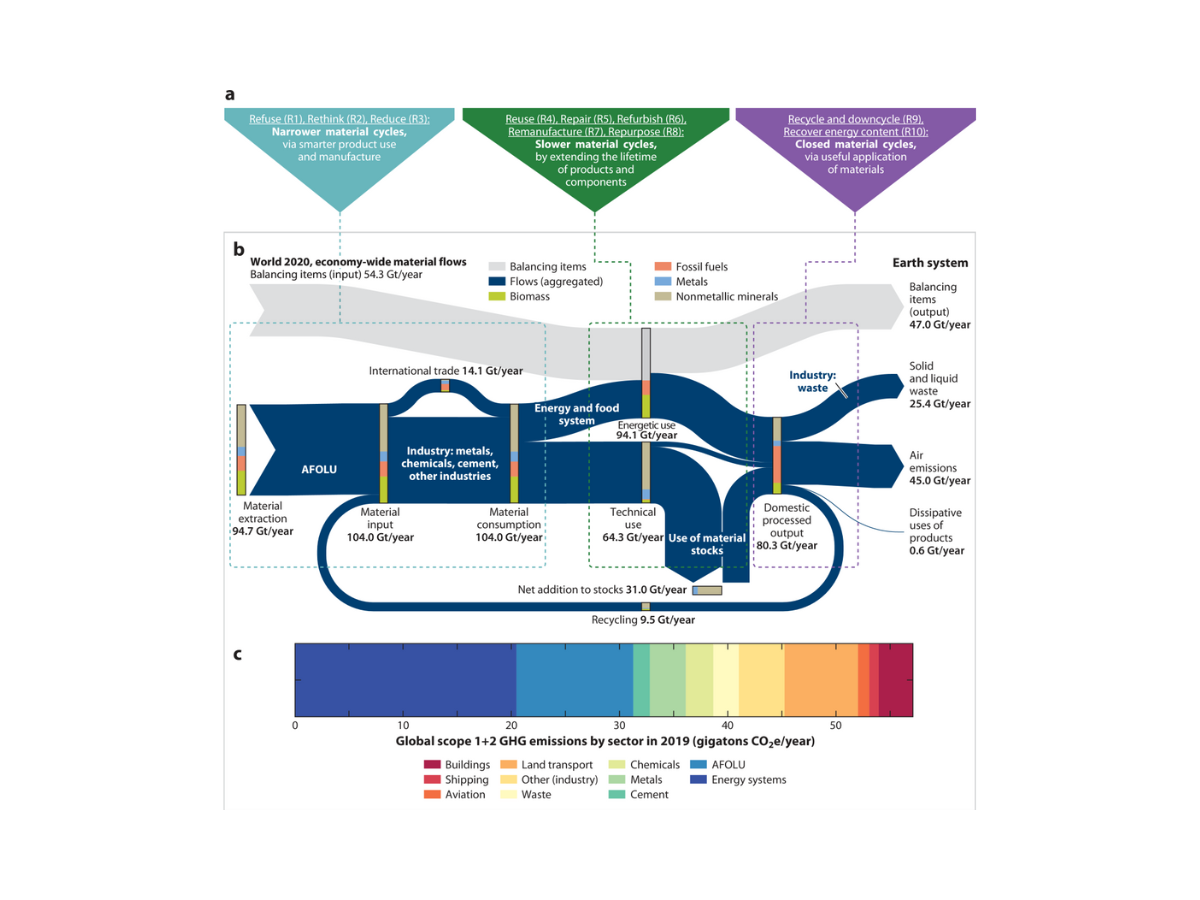
As global resource use and emissions keep rising, the circular economy (CE) is gaining traction as a strategy for avoiding waste and reducing virgin raw material demand, thereby potentially also mitigating energy demand and GHG emissions.
The team from our CircEUlar partner BOKU released a new review which analyzes 75 studies modeling 500+ CE measures — from reduced demand to reuse and recycling — to understand their macro-level outcomes for national to global climate change mitigation. Below, some of the main insights.
- CE strategies that narrow, slow, and close material cycles can reduce GHG emissions by an average of 17%.
- When combined with energy efficiency and energy system decarbonization, mitigation potentials rise to around 50%.
- The CE complements other strategies such as avoid–shift–improve, energy efficiency, material substitution, sustainable land use, as well as dietary change.
- However, clear definitions, consistent modelling frameworks, and open data are still lacking — all vital for modeling the interdependencies among material cycles, energy systems, and GHG emissions across sectors and supply chains.
The review calls for stronger links between industrial ecology and economic modeling, and for embracing open science to build a more systemic understanding of how circularity can contribute to climate goals.
Figure: Situating the circular economy and its aim to narrow, slow, and close material cycles vis-à-vis global material cycles, energy use, and GHG emissions. (a) Locating the micro-/meso-level 10R measures (40) and their envisioned macro-level outcomes of narrower, slower, and more closed material cycles. (b) Global economy-wide resource use patterns and the resulting waste and emissions, differentiating resources used for energy provision, food, and feed, from the materials processed into long-lived material stocks and short-lived products. Data taken from Reference 8. (c) Global GHG emissions by sector including upstream emissions from electricity and heat provision. Data taken from References 7 and 56. Abbreviations: AFOLU, agriculture, forestry, other land use; GHG, greenhouse gas; Gt, gigatons (109 metric tons).
